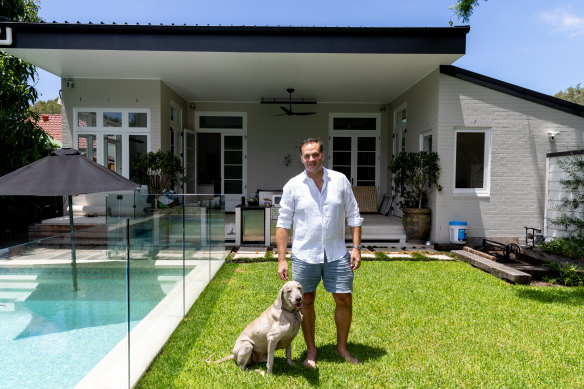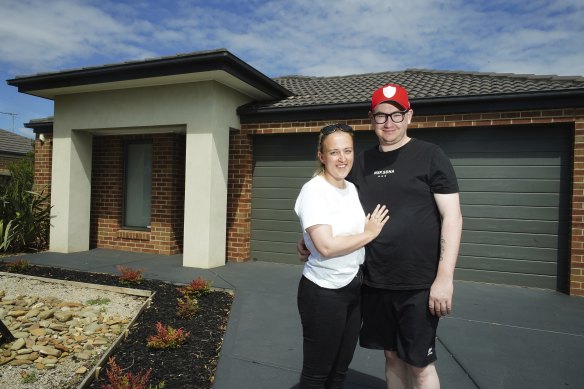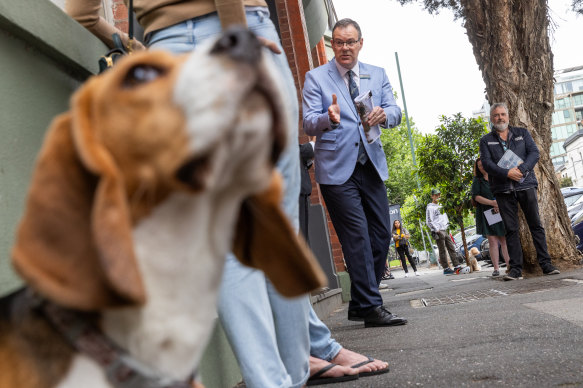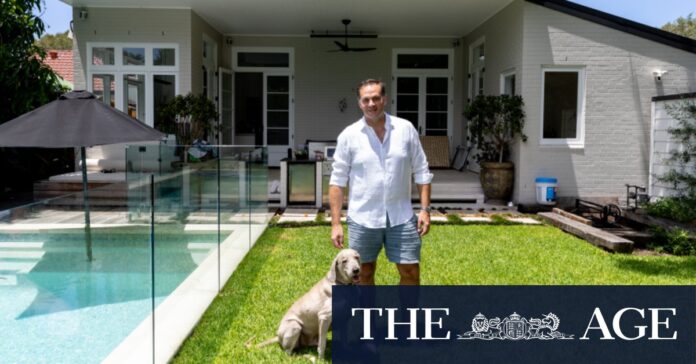[ad_1]
Such buyers were also competing for fewer homes for sale as vendors held back early in the year amid concern about softer market conditions, which led to increased competition on available homes, and helped fuel price growth.
In Sydney, Ray White Touma Group director Roger Wardy said agents were surprised by the rebound.
“I don’t think anyone thought it would pan out the way it did,” he said. “There was all of the doom and gloom of interest rates going up, but the prices have actually increased.”
While rate hikes did impact the market, not all price segments were equally affected. “Anyone buying above $3 million didn’t really get affected because they earned enough to cover the extra repayments,” Wardy said.
Higher building costs also swayed buyer behaviour, pushing up demand and prices for new or renovated homes, Wardy said, as buyers avoided properties that needed increasingly costly work done.
Wardy worked with sellers Ben and Skye Rollo, whose renovated property in Sydney’s eastern suburbs, sold a few weeks before Christmas.
The Rollos, both in their 40s, with three children, had been watching the market, and realised there was a good opportunity to sell their Kensington home.

Ben Rollo in the renovated house he and wife Skye Rollo sold just a couple of weeks before Christmas.Credit: Edwina Pickles
“We looked at the market and renovated properties were doing really well,” Ben said. “There also wasn’t a lot of good quality stock in Kensington,” Skye added.
Ben, who works in commercial real estate, and Skye, who is an interior designer, have bought another property around the corner, and are now planning their next project. They will move into their new fixer upper on January 1.
In Melbourne, the market held relatively stable throughout the year, even as rates rose, and the number of properties for sale remained low for much of the year.
Loading
Barry Plant Melton partner Ned Nikolic said; “Last year and this year, they were predicting the same thing, that the sky would fall, but it hasn’t happened yet.”
In the outer west, buyers were looking to established, renovated properties, rather than building a new home, given the collapse of major builders, and the added costs of building materials, Nikolic said.
Investors were also selling, as in many parts of Melbourne, Nikolic said, due to rising land taxes. But this was opening up opportunities for owner-occupiers, including first home buyers.
Shannan Fry, 28, and her partner Robert Goudge, 31, bought their first home in Harkness from Nikolic, a week before Christmas, acting quickly while they had pre-approval.

Shannan Fry and her partner Robert Goudge in front of their new home in Melton.Credit: Luis Enrique Ascui
It had been tougher than expected for the couple to secure financing, and Fry sold off one of her two cars to get the loan, as their borrowing power fell.
“We did tighten what we were going to spend a lot because we weren’t able to borrow as much as we were hoping for,” Fry said.
“We had pre-approval, so we made an offer and a couple of days later there was a bidding war with another person, but we ended up putting the highest offer in.”
The couple will move into their new home in February.
Though economists were predicting a dire 2023, there are mixed forecasts for 2024.

Australia’s house prices are predicted to continue to rise in 2024, despite the lift in interest rates.Credit: Jason South
The big four banks believe house prices will rise by a more modest 5 to 6 per cent nationally, following a slowdown in gains towards the tailend of the year as the supply of homes for sale increased.
But other financial institutions, including AMP, believe prices could fall by 5 per cent, especially if the cash rate lifts further early next year.
[ad_2]
Source link


